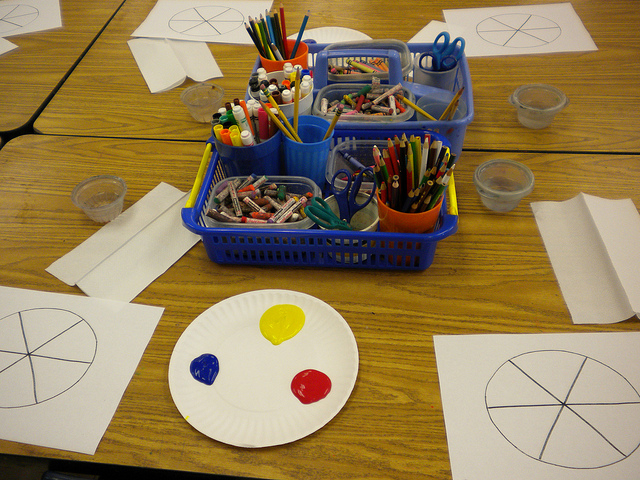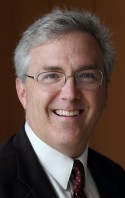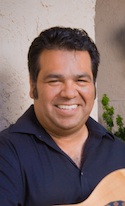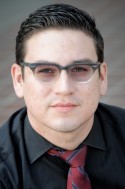
We’d love for our schools to teach Billy to play the tuba or draw an elephant, but the money isn’t there for it. Few California public schools spend more than a couple of percentage points of their budget on education in the arts, and funding has been scarce for decades now. So what is to be done? In advance of “An Evening With Debbie Allen,” a Zócalo event, we asked several educators and professionals if the arts in California’s public schools were dead and, if so, what, besides money, might revive them. Here is what they said.

For arts education in California schools, these are the best of times. These are the worst of times.
Public valuing of a well-rounded curriculum is strong and getting stronger. Californians understand that imagination, creativity, and innovation will shape the future. Our State Superintendent Tom Torlakson and the California Arts Council will soon release a new Blueprint for Creative Schools. They have joined with the California Alliance for Arts Education and the County Superintendents to form CREATE CA—a coalition working to place the arts at the center of the educational process. Dynamic local initiatives to expand arts education are gaining traction in the Bay Area, Los Angeles County, Orange County, and San Diego. After years of horrific budget cuts, school funding is beginning to rebound.
And yet, educators feel trapped by a system that focuses only on test scores, at the expense of the whole child and the whole curriculum. Squeezed between budget cuts and pressures to raise scores, educators worry they cannot “risk” spending time on the arts. Sadly, those kids who would gain the most from the arts receive the least. Instead, school is a grueling series of lectures and worksheets, devoid of joy or meaningful engagement.
There is a growing movement to challenge the testing frenzy, but it is still very grassroots. It’s time for all of us to join the conversation and demand all kids have access to quality arts education, not just the lucky few.
Mark Slavkin is vice president for education at The Music Center and chairs the board for the California Alliance for Arts Education.

While I don’t believe that the arts are dead in California’s public schools, they are certainly suffering. Cuts in arts programs in order to focus dwindling financial support for “core” subjects has eliminated positions for visual arts, music, dance, and drama instructors across the state.
One hope on the horizon comes by way of a couple of reform initiatives that are building in our state: integrative approaches to education and the common core. Integrative learning is a natural for the arts; learning through meaningful project-based lessons allows students to bring together the content from multiple academic areas and create art using that knowledge. Examining a great work of literature through the creation of a collage, writing songs about geometry, understanding the civil rights movement through drama or dance—these activities allow students to have a personally meaningful and expressive outlet while building on standards-based instruction.
The new Common Core standards work well with the arts; asking our students to examine complex text, for example, is something we currently do in our arts classrooms while revisiting great works of art. Teaching our students to use new media and technology in their arts classrooms provides them will the skills needed for 21st-century careers.
To keep the arts vital in our schools and to earn an equal place at the table along with the core academic areas, it is up to newly minted arts teachers, along with those already in the field, to reach out and find willing teaching partners in their schools. Arts instructors must be fluid in adapting themselves to the extra planning and accommodations that will be needed in order to plan and implement meaningful learning experiences for their students, but the outcome will benefit us all.
Dr. Laurie Gatlin is an assistant professor in the School of Art at California State University, where she oversees the Single Subject Credential program in Art Education. You can follow her on twitter at @lauriegatlin.

Public education in California has been dismantled. The tattered state of the arts in schools is only one of many examples of our divestment from human capacity, our greatest resource. A meaningful educational investment requires a comprehensive approach that includes mathematics, language, history, literature, arts, sports, shop, and more. It is the synergy of these subjects and activities that shapes children into functional citizens necessary in a healthy democratic society.
The crippling of arts education, in particular, illustrates how we have robbed education of joy. The arts provide discipline, creativity, expression, teamwork, leadership and more within the gratifying context of fun and possibility. Without cultivating a child’s innate sense of the wonder of discovery through work and play, education becomes a mere obstacle course. When children discover their own love of learning they can then fully take advantage of the information that surrounds us and begin to realize how they can shape our world.
The demise of comprehensive education creates a menu approach that makes cutting programming palatable. This may serve the short-term interests of some, but it is a recipe for the broad, long-term failure that we witness today. Restoring education cannot be approached piece meal. Lasting solutions will occur only when we as a society truly value education as nothing less than the passing of our human legacy across generations. To do this without art is unthinkable.
Eugene Rodriguez is the founder and director of Los Cenzontles Mexican Arts Center.

Are the arts dead in California public schools? Absolutely not. But they are not thriving. As pressure has increased on schools to produce graduates who meet specific competency standards in English, language arts, and math, decision-makers have understandably prioritized resources to deliver student achievement on standardized tests in those subject areas. An unintentional byproduct of that focus has been a slow starvation of arts programs in all but a very small percentage of California schools. And yet, through new and traditional media, young people have ready access to art. Reality television is filled with competitions in dance, music, and visual art. YouTube and Vimeo offer a place for youth to showcase their work. KickStarter is democratizing the funding of art through crowdsourcing. Popular culture still celebrates artistic achievement. And, with support, schools will catch up.
The prescription for arts-starved schools starts with a solid dose of information. As new school reporting mechanisms emerge (in coming years, no more than 60 percent of a high school’s API may consist of standardized test scores), the emaciated school arts programs will become evident. As awareness grows, concerned parents and community members must advocate for healthier arts programs.
A second element in a prescription for healthy arts programs lies in clarifying the goals of arts instruction. When mindfully integrated into the school day, the arts elevate students’ understanding, achievement, and experience in other core subject areas as well as in the arts discipline being taught.
A third critical piece of the prescription lies in collective action. If we are to boast of healthy, creative schools, everyone has to be involved—administrators, artists, teachers, community leaders, and parents. Some of this work has begun through the efforts of Create CA—Core Reforms Engaging Arts to Educate. This work must continue to expand in order to implement a recuperative strategy for arts education in California.
Kris Murray is the executive director of Young Audiences of Northern California, an affiliate of the national Young Audiences Arts for Learning network.

The arts are alive in some public schools. In some school sites and school districts, they are thriving, thanks to active parents, supportive leadership, and generous non-profits. The efforts of cross-sector partnerships at the local, regional, and state level, such as those coordinated by Arts for LA and our strategic partner the Los Angeles County Arts Commission’s Arts for All collaborative, also play an important role in keeping the arts alive.
The arts may be alive in some public schools, but they are not accessible to every student. There is a direct relationship between a student’s income level and their access to high quality arts education programs. In part, this is because parents in better economic circumstances sometimes help raise private money to fund arts programs in their children’s schools.
What will make arts education accessible to all students? Simply put, it is moving public support to public will. Support for arts in public schools is very high, but not all of those supporters are actively advocating for all students to have access to a complete education that includes the arts.
Here are a couple ways to support arts education for all students:
Parent art supporters: join your school site council (the body that works with the principal to develop, review and evaluate school improvement programs and school budgets), ask about the status of the arts, and explore using Federal funds such as Title I to support arts education strategies to address the achievement gap, literacy, numeracy, and parent engagement.
Principals and teachers who support the arts: reach out to your communities to form partnerships with local cultural resources and create mutually beneficial opportunities to utilize local artists and arts organizations.
Artists (teaching or not): understand and foster awareness of the role of arts education in teaching the 21st century workforce skills: creativity, collaboration, critical thinking, and communication (the 4Cs).
All supporters should stay informed and broadcast any opportunity to support legislation and budget decisions that will increase access to the arts.
Once enough arts supporters advocate for a complete education that includes the arts, we will reach a tipping point that will lead to favorable policy (and funding). Most importantly all stakeholders will know that the arts are an inseparable part of the school day.
Abe Flores, advocacy field manager for Arts for LA, liaises with and organizes arts advocates throughout LA County.

The state needs more arts education. California neglects education that supports creativity and innovation to its potential peril. That’s not to say there aren’t schools providing fantastic arts programs in the Golden State, but these programs are the exception, not the rule. The state’s global position as an intellectual-property leader relies on a creative and innovative workforce.
The California Arts Council and the California Department of Education teamed up with state leaders at a national arts-education institute in April 2011. Great ideas were proposed, but the team realized that they were going to need help beyond government.
The result is a statewide coalition called CREATE CA (Core Reforms Engaging Arts To Educate) of over 500 people. An offshoot of the effort includes a major policy paper for Superintendent Tom Torlakson called The Blueprint for Creative Schools, due for publication this summer.
Arts education should be part of a larger economic development plan to reduce the drop-out rate, increase graduation rates, and educate our kids for 21st-century jobs as critical thinkers, creators, innovators, and collaborators—skills obtained by studying the arts, not working on bubble tests.
The CREATE CA coalition includes the California PTA, funders like Hewlett, Sony and Boeing, the university research community, professional teaching artists, arts non-profits, creative industry workers and education leaders. But there’s plenty more room at the table, especially for business leaders who have a stake in California’s future workforce, and for arts-education supporters to help implement the Blueprint for Creative Schools recommendations on the local level.
Education is truly a local issue, and your voice counts. Talk to your local school district administrators and school principals about the importance of arts education for California’s future.
Craig Watson is director of the California Arts Council.

As a child, I was afforded all types of arts classes in school, including music, painting, choir, acting, and speech. It was impossible to imagine these valuable resources would ever become extinct! Well, they have, and it’s not conducive to a culturally rich and positive society.
The arts are dead in California’s public schools, and we all are at risk of the “idle mind” and “Devil’s playground.” We have witnessed a rapid decrease in funding over the past decade in all areas of the arts. These important tools are taken away from our children without an equivalent replacement. This leaves them to look to other means of satisfaction and escape, usually for the worst.
I believe the best way to revive the arts in California’s public schools is for each one of us to become proactive in the nurturing of our youth and to provide hands-on lessons, demonstrations, and workshops. We should use our voices, band together, and confront our politicians on a local and government level.
We all complain about injustice, yet very few of us do anything about it. We can peacefully become an integral part of the solution and not fuel the power of the problem. Parents, educators, and the children should come together to bring more light to the issue. We are only as strong as our weakest link!
Lacy Darryl Phillips (LDP) aka “Uncle Earl” is currently creator/producer of “The Ultimate Underground Experience,” a global music, arts and education project. Phillips is host/DJ of his weekly radio program “The Underground Experience,” which airs on KLED Live FM and The Southern Star Network. More information at www.UltimateUnderground.com.



